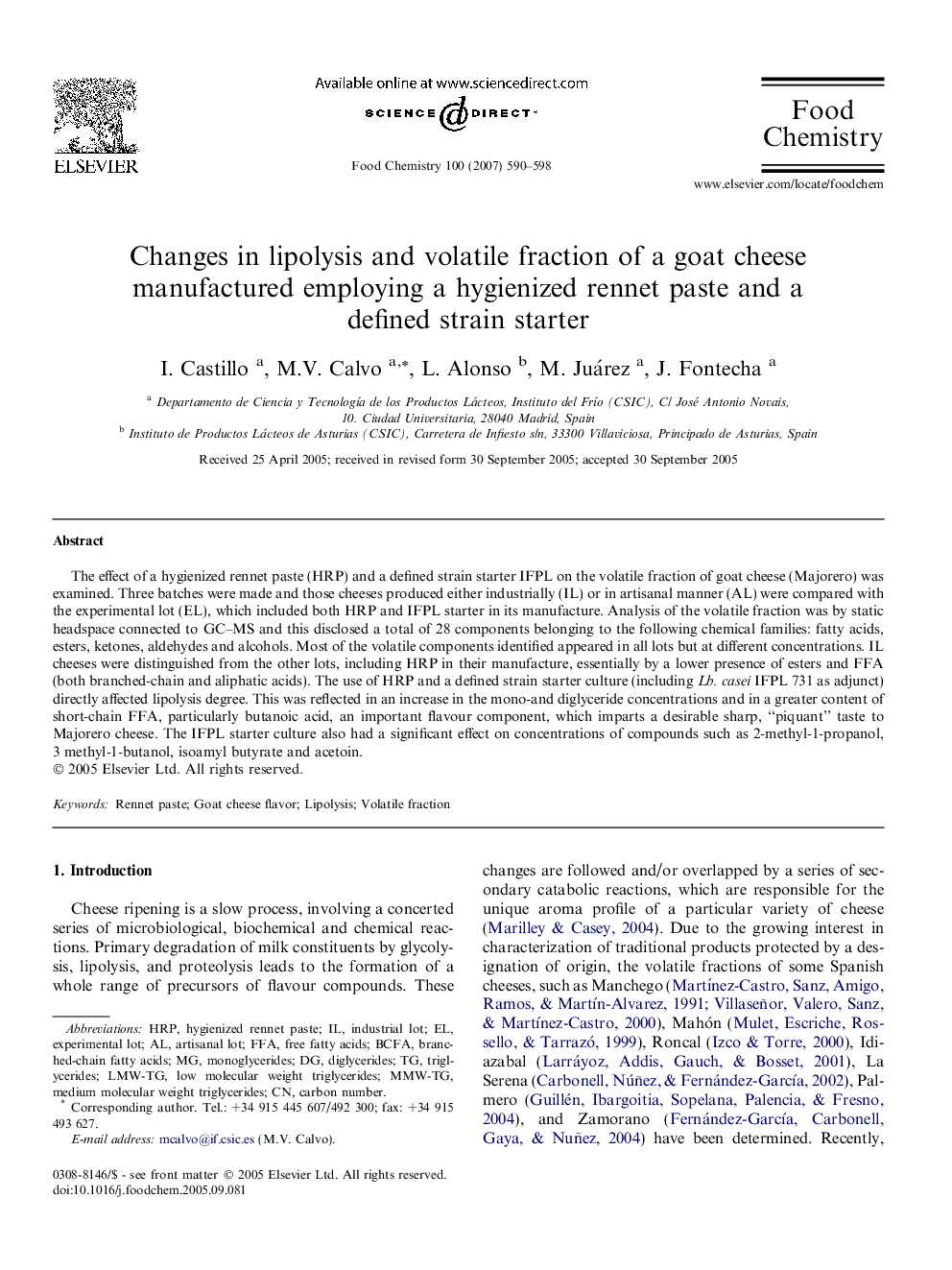| Article ID | Journal | Published Year | Pages | File Type |
|---|---|---|---|---|
| 1190717 | Food Chemistry | 2007 | 9 Pages |
The effect of a hygienized rennet paste (HRP) and a defined strain starter IFPL on the volatile fraction of goat cheese (Majorero) was examined. Three batches were made and those cheeses produced either industrially (IL) or in artisanal manner (AL) were compared with the experimental lot (EL), which included both HRP and IFPL starter in its manufacture. Analysis of the volatile fraction was by static headspace connected to GC–MS and this disclosed a total of 28 components belonging to the following chemical families: fatty acids, esters, ketones, aldehydes and alcohols. Most of the volatile components identified appeared in all lots but at different concentrations. IL cheeses were distinguished from the other lots, including HRP in their manufacture, essentially by a lower presence of esters and FFA (both branched-chain and aliphatic acids). The use of HRP and a defined strain starter culture (including Lb. casei IFPL 731 as adjunct) directly affected lipolysis degree. This was reflected in an increase in the mono-and diglyceride concentrations and in a greater content of short-chain FFA, particularly butanoic acid, an important flavour component, which imparts a desirable sharp, “piquant” taste to Majorero cheese. The IFPL starter culture also had a significant effect on concentrations of compounds such as 2-methyl-1-propanol, 3 methyl-1-butanol, isoamyl butyrate and acetoin.
